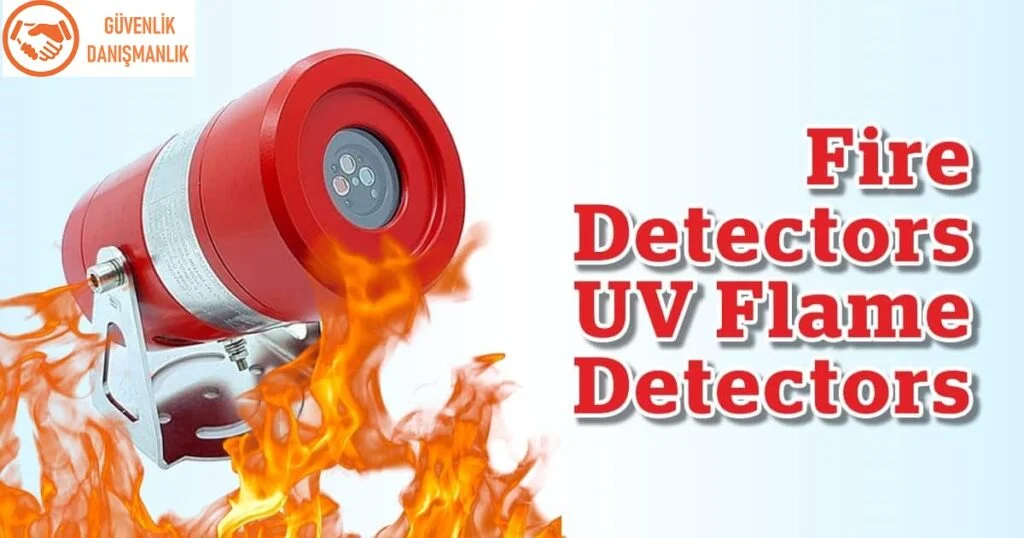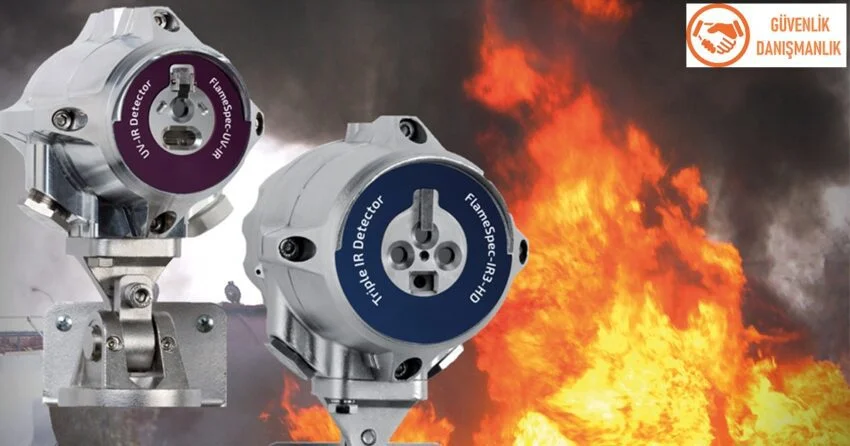Flame detectors are devices used in fire safety systems that detect flames and trigger an alarm. Flame fire detectors can operate using different technologies. Optical, ultraviolet, or light detection technologies are the most commonly used.
Optical flame fire detectors work by detecting the light emitted by the flame. The characteristics of the light emitted by the flame can vary depending on the temperature of the flame. Optical flame fire detectors measure the changing properties of this light to detect fires and trigger an alarm.
Ultraviolet flame fire detectors work by measuring the response of the flame to ultraviolet radiation. The flame’s response to UV radiation is different from other types of radiation, and ultraviolet flame detectors detect this different response to identify fires.
Light detection flame fire detectors typically work by detecting flashing lights. These detectors are used in environments where flammable substances or explosive gases are present and trigger an alarm quickly.
Flame detectors are generally used in industrial and commercial buildings. These buildings have a high risk of fire, and rapid detection of fires is important. Flame fire detectors are also used in environments where explosive and flammable materials are present.
Some flame fire detectors can also detect gas leaks. This feature is important in environments with a high risk of fire and explosion, and ensures that an alarm is triggered quickly in the event of danger.
Flame fire detectors play an important role in fire safety systems and there are many different brands and models available. For example, Honeywell’s FlameVision FV300 series flame fire detectors provide high performance and sensitivity in industrial environments. Siemens’ Cerberus PRO series flame fire detectors combine IR and ultraviolet technologies to provide high sensitivity. Det-Tronics’ flame scanner detectors are designed for high-temperature and high-density fires in industrial environments.

The type of flame fire detector that is better depends on the application area and the environment in which it will be used. Optical flame fire detectors are generally used to detect widespread fires, while ultraviolet flame fire detectors are more suitable for detecting smaller and intense fires. Light detection flame fire detectors are typically used in environments where explosive and flammable gases are present.
Optical flame fire detectors are the most commonly used flame fire detectors, measuring the light emitted to detect fires and having a wide range of applications. Ultraviolet flame fire detectors, on the other hand, are designed for more specific applications and are used to detect smaller and more intense fires. Light detection flame detectors are designed to be used in environments where explosive and flammable gases are present and to give a rapid alarm.
To decide which type of flame fire detector to use, it is necessary to evaluate the fire risk and consider the characteristics of the environment in which it will be used. In addition, the quality and performance of the detector to be used should also be taken into account when making a choice.
Fire detectors have many advantages, but they also have some disadvantages. Here are the advantages and disadvantages of fire detectors:
Advantages:
- Fast and accurate: Flame detectors act quickly in the early stages of a fire and prevent the spread of the fire. Additionally, flame fire detectors are very sensitive, so they can recognize other factors that could cause false alarms (such as sunlight).
- Reliable: Flame fire fire detectors are more reliable than other fire detection devices. This is because flame detectors directly detect whether a fire really exists, whereas other devices detect it indirectly.
- Adapt to different working environments: Flame detectors can be designed to adapt to various working environments. For example, there are flame detectors specially designed for high-risk areas such as the petrochemical industry, shipbuilding industry, or wind power plants.
- Easy to maintain: Flame fire detectors are easier to maintain than other fire detection devices. This is because flame detectors do not contain dust or other pollutants that could clog air ducts, filters, or other parts.
Disadvantages:
- High cost: Flame fire detectors are more expensive compared to other fire detection devices.
- Limited detection area: Flame detectors can typically detect only a few meters of an area. Therefore, if they need to be used in a large area such as a warehouse or building, multiple flame detectors may be required.
- Factors that can interfere with flame detectors: Flame fire detectors can give false alarms due to objects or conditions in the environment. For example, fluorescent lights, sunlight, or other flames. Can only detect
- flames: Flame fire detectors can only detect flames. They cannot detect other fire indications such as smoke or heat. Therefore, flame fire detectors may not be sufficient for a complete fire protection system.





